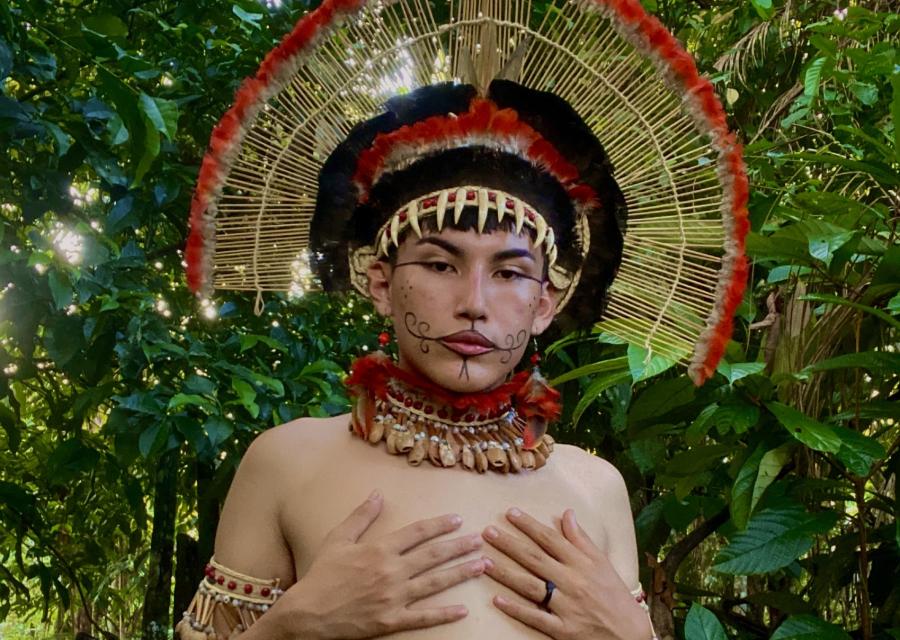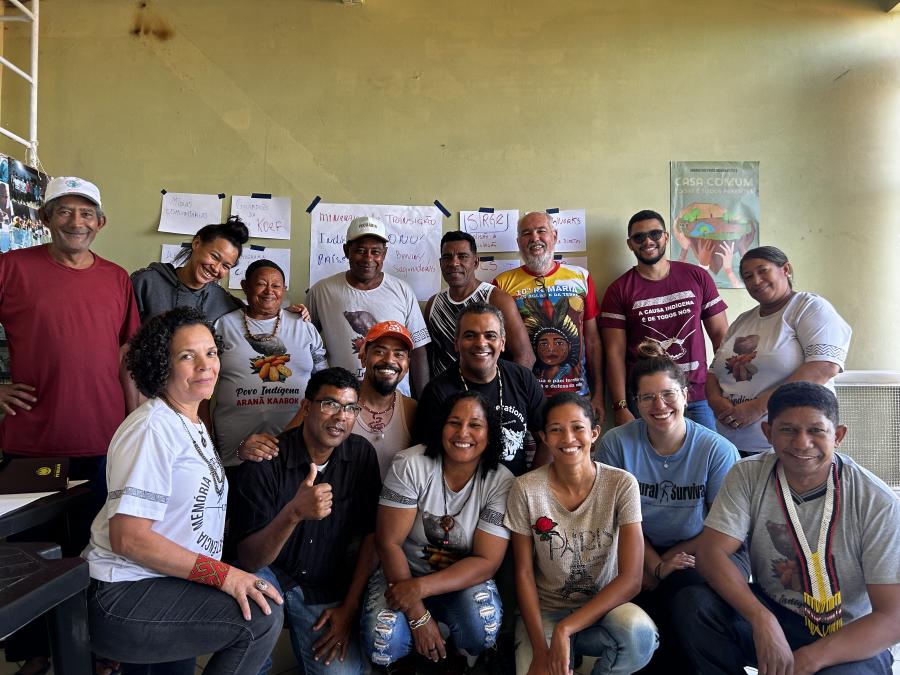The Polonoroeste Case in Brazil
The Polonoroeste project consists of highway resurfacing, the building of feeder roads, the construction of storage facilities, the titling of land, and other "development" measures in western Brazil. The World Bank contributed $412 million to the project. Serious doubts about the wisdom of this expensive project were voiced before loan arrangements were signed.
One concern about the project was its effects on the indigenous peoples of the area. Beginning in 1980, organizations concerned with the welfare of native peoples called for strict safeguards to protect the Indians of the project area from the expected huge influx of migrants. They argued that the agency officially responsible for Brazilian Indians, FUNAI, could not be trusted to design or implement adequate protection measures. In spite of these arguments, which were amply supported by historical documentation and expert opinion, the World Bank agreed to fund the Polonoroeste project and entrust Indian protection measures to FUNAI with only minimal, part-time supervision by one World Bank anthropologist who is inexperienced in Indian affairs.
Evaluation reports made by Brazilian investigators in 1983 for Fundaçao Institute de Pesquisas Econômicas (FIFE) reveal that the program to safeguard Indian well-being has been, as predicted, a near-total failure. It is not possible to review the results of the whole project in detail, but by selecting a reasonable sample of affected tribes, the general patterns can be seen in concrete terms. To this end, aspects of the situations of the native societies in the vicinity of the Aripuana Park (the Cinta Larga, Suruí, Gaviao, and Arara Indians) are reviewed below.
Land
Almost everywhere severe land invasions are occurring which threaten the Indians' future. Little defense against these invasions is being offered by FUNAI, the official Indian defenders. In fact, since the project began, Brazilian law has been changed to make the demarcation of Indian lands even more difficult.
Several ranches have operated illegally on the territory of the Cinta Larga Indians for years. In Ouro Preto, a mining operation with 150 workers has been functioning since 1978 on the land of the northern Cinta Larga. No attempt has been made to expel these enterprises though they introduce fatal diseases, prostitution and social disruption to the Indians. The land interdicted for the northern Cinta Larga has yet to be surveyed and demarcated.
Many new problems are being ignored. A hydroelectric dam is being constructed on the headwaters of the Aripuana River within the boundaries of Cinta Larga lands. The town of Espigao d'Oeste, with the support of the state government of Rondônia, wants to build a road cutting the Aripuana Park in half. More incursions are reported in the southern part of the Cinta Larga land and in the east, Indians fare in frequent contact with settlements along Highway BR-172. The boundaries of the Cinta Larga territory are not maintained and the perimeter is not patrolled.
The reserve of the Suruí Indians is readily accessible to outside observers and therefore has received more attention than less accessible areas. In 1981, eighty settler families were expelled from the reserve, ending years of conflict with the Suruí.
The land of the Zoró Indians, immediately to the north of the Suruí, has still not been surveyed and demarcated. According to the FIFE investigator, the FUNAI agent in charge of the Zoró reserve did not know where the boundaries were and had made no effort to determine if land invasions had occurred. A road from a large ranch is thought to illegally cross the Zoró land, but no effort has been made to investigate it.
The reserve of the Gaviao and Arara Indians was invaded from the southeast in the summer of 1983. The local FUNAI personnel appear to have taken no measures to counteract this invasion, giving false assurances to the Indians instead. This lack of response encouraged other settlers, and there are now reported to be 750 settler plots cleared on Indian land. The Gaviao Indians, furious with this massive encroachment, seized non-Indian hostages in the summer of 1984 and again in September. Violence is likely to occur if the responsible government agencies do not resolve the situation.
Health
In general the Indians most recently contacted are the most endangered by Western diseases. They also tend to be more inaccessible, less docile and, therefore, more neglected.
The health situation of the Cinta Larga is nothing short of catastrophic. It appears that many of the northern Cinta Larga have died or are dying due to a lack of preventive or curative treatment to combat Western diseases introduced by miners and settlers. A measles epidemic was reported in 1980 which could have been prevented by simple vaccination. Most Cinta Larga do not live on posts and so receive no medical assistance. Even on the posts medical attendants are seldom adequately trained, Indian agents know even less, and there is a high turnover rate for both. At the Serra Morena Post, where less than one hundred Cinta Larga live, twenty-two Indians died in 1980 and 1981. The infant mortality rate was over 50%. Vaccination is done haphazardly - only those Indians who happen to be close at hand when the Flying Health Team visits are vaccinated - and nobody is sure which Indians have or have not already been vaccinated.
The health situation of the other tribes is better than that of the Cinta Larga, and their populations are increasing. The infant mortality rate among the Suruí is about 25 %. There is a new medical building among the Gaviao, but its three beds are almost never used and the medical attendants come and go. Venereal disease is suspected among the Suruí and Gaviao. One report states that only the Zoró children, not the adults, were vaccinated against measles, leaving the adults susceptible to a future deadly epidemic. It is not known if this faulty practice has been carried out among other tribes in the area.
Economics
During the past several years agricultural "development" projects have been instituted among most of the tribes under discussion. These have been collective, regimented projects which are contrary to native practices and to the goal of Indian self-determination. Local FUNAI personnel receive equipment and food to pay Indians who work as peons under their direction.
Among the Gaviao Indians the first big collective cultivated was undertaken in 1980; it was poorly planned and failed. The second year production was more successful, but much of the rice could not be marketed and the coffee plants suffered from pests and diseases which the Indians could not control. Further, production goals were far in excess of local needs. Diet suffered as men were forced to hunt less and families became dependent on purchased food.
In 1983 the Zoró Indians were working eight-hour days under FUNAI direction. Elsewhere, regimented projects have waned as their funding was cut or they proved unsuccessful.
Education
Schools have been built for the Gaviao, Suruí and Cinta Larga. However, few of the Indians speak Portuguese and there is no established curriculum. Among the Gaviao less than 30% of the children attend school, and then only irregularly. The adults don't want to attend though they were avid students in previous years.
Indigenous Culture
Indian culture is generally being undermined, if not actively discouraged. The Zoró were told to practice monogamy and live in individual Brazilian-style houses instead of the traditional big houses. They are now ashamed of their own religion and customs and hold Protestant services on Fridays and Sundays. The FIFE investigator had an impression of "galloping cultural impoverishment." Among the Zoró and the other tribes, the drive to turn Indians into peons has interfered with the practice of native customs.
Conclusion
From the above cases it is evident that the World Bank made a major error in trusting the Brazilian government and its officially designated agency, FUN AI, to safeguard the interests of the Indians in the Polonoroeste project area. A pattern of willful ignorance by FUNAI staff has emerged - invasions of the Gaviao, Zoró and Cinta Larga lands were and are being ignored. The number and location of the Cinta Larga Indians has not even been determined. Cosmetic measures of no real value to the Indians abound: schools which do not function, pharmacies with no trained medical attendant, "agricultural assistance" to peoples who have subsisted nicely on their own for thousands of years, and a Flying Health Team which does not reach Indians off posts and doesn't know who has or has not been vaccinated.
Money and effort are being misdirected and wasted on these measures while real, serious needs are being ignored. For example, instead of using food and equipment to pay, through the food for work programs, for regimented agricultural projects among the Cinta Larga, Zoró and Gaviao Indians, the same resources could have sponsored a workforce of Indians to reopen the trails marking reserve boundaries and to patrol those boundaries. This would have forestalled invasions and not interfered with tribal life. Vaccination of the Cinta Larga could be done in a few months by a competent paraprofessional team (perhaps contracted from outside FUNAI) charged with that specific task. This would save many lives and even save money in the long run by reducing air evacuation and hospitalization costs.
World Bank policy is that loans for areas inhabited by tribal peoples should only be made if the wellbeing of the affected peoples can be guaranteed. In the Polonoroeste project, they have violated their own policy. The World Bank should refuse further loans to Brazil unless the grave and deteriorating situation of the Indians in the Polonoroeste area is improved. One way to end the total reliance on FUNAI would be to set up a committee appointed by the Brazilian Anthropological Association which would gather information, formulate specific measures for the Indians, and direct their implementation. The FIFE evaluators would be obvious candidates for such a committee. Just giving FUNAI more funds for its misdirected programs is no solution; it simply rewards failure.
Article copyright Cultural Survival, Inc.


